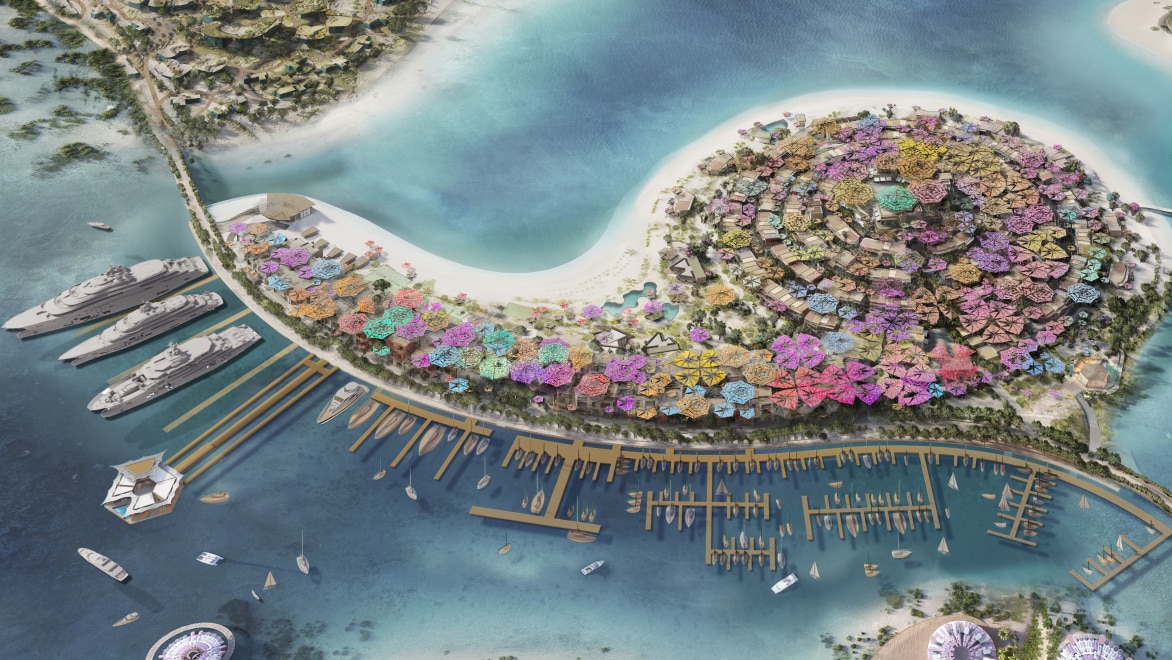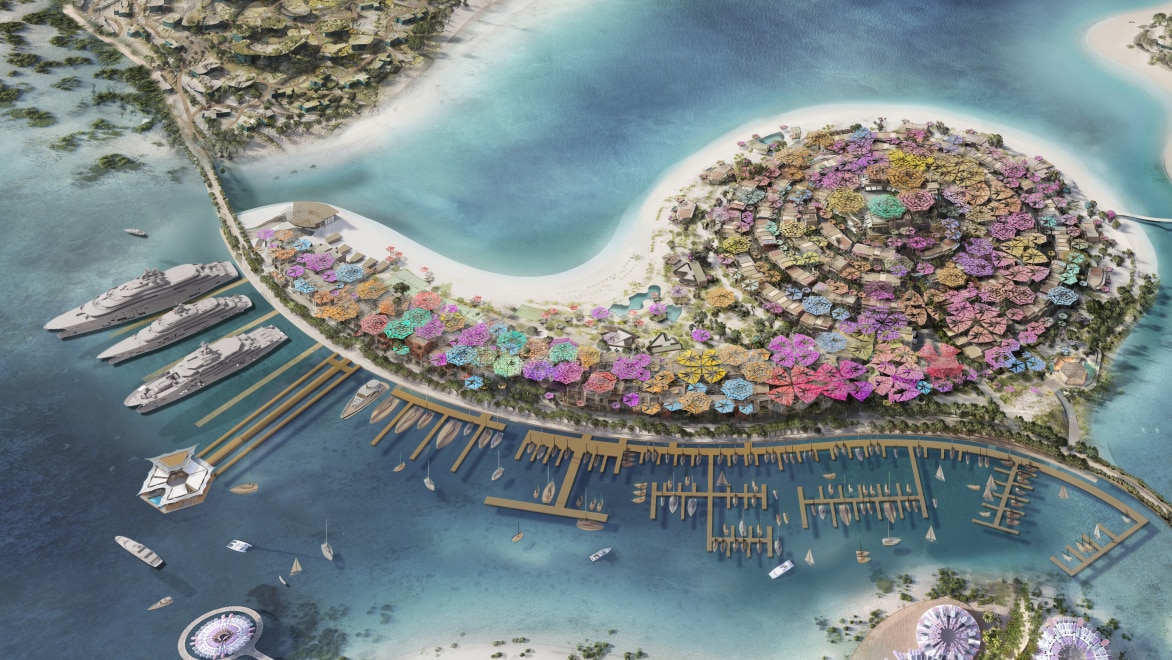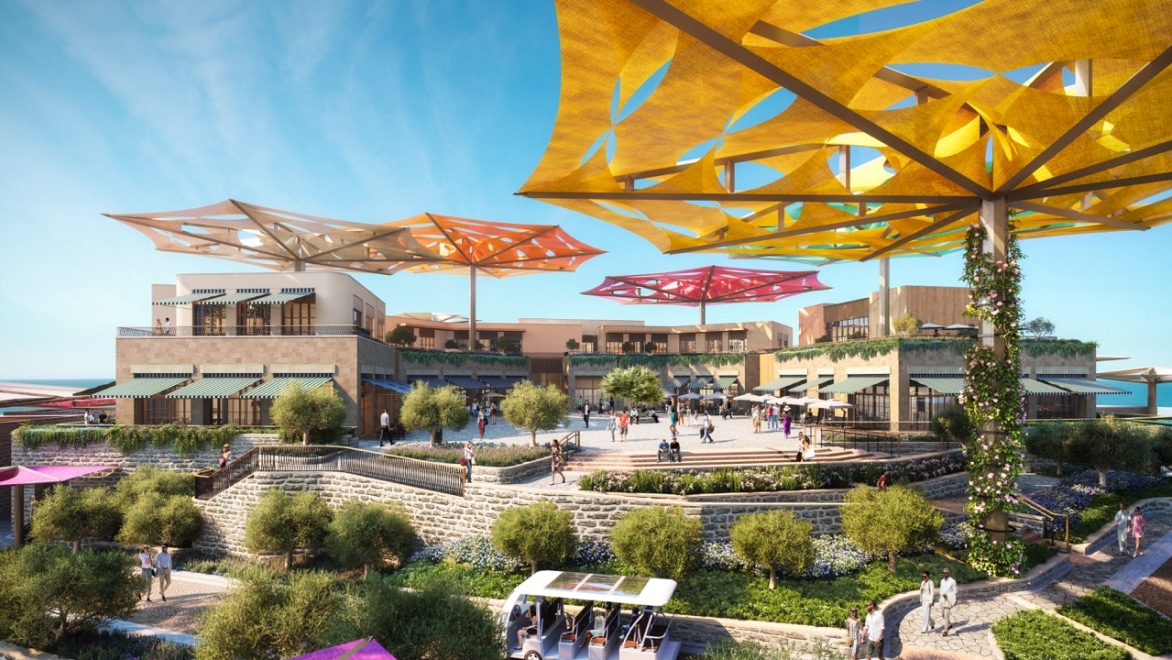Khatib & Alami
Sustainability Meets Innovation: The Role of Autodesk Technologies in Shura Island's Visionary Project
BIM in Architecture
Share this story
Redefining Digital Innovation and Sustainable Design
The Grand Hyatt The Red Sea (Central Hotel #1) at Shura Island, the heart of The Red Sea destination developed by Red Sea Global (RSG), is redefining luxury tourism. The island's innovative "Coral Bloom” design concept, conceived by Foster + Partners, intricately weaves together the island’s natural beauty, inspired by biomimicry promoting a unique “barefoot luxury” experience. Through nature-inspired engineering solutions and innovative landscaping, the hotels not only enhance the island’s natural state but also provide functional defenses against erosion, seamlessly blending with the pristine landscapes.
Real estate developers RSG and Khatib & Alami (K&A) revolutionized data flow and digital delivery for Shura Central Hotel through robust BIM monitoring mechanisms, ensuring seamless integration of advanced engineering and architectural solutions. As the executive architect, K&A led the project’s implementation, aligning closely with client expectations and coordinating with 20+ stakeholders to craft essential BIM and design compliance strategies. Leveraging Autodesk tools, the teams optimized material evaluation, streamlined system integration, and implemented quality assurance measures, delivering a project that combined innovation with operation efficiency, resulting in fully coordinated design models and enhanced project delivery timelines.

Photo courtesy of Red Sea Global
How BIM Boosted Efficiency by 50% in the Shura Island Central Hotel Project
BIM is an advanced digital blueprint model that centralizes and integrates comprehensive details of a building's lifecycle, including design, construction, and maintenance. By serving as a shared, dynamic 3D model, BIM streamlines collaboration among architects, engineers, contractors, and owners, ensuring alignment and operational efficiency across every project phase.
RSG and K&A led the successful integration of advanced Autodesk tools such as BIM 360, Revit, Civil 3D, and Navisworks in the Shura Island Central Hotels project. These technologies played a critical role in reducing errors and enhancing design coordination across the project. The implementation of BIM monitoring mechanisms facilitated the seamless integration of advanced engineering and architectural solutions while coordinating with over 20 stakeholders, ensuring consistent communication and alignment. This collaborative, technology-driven approach resulted in a remarkable 50% improvement in project efficiency, setting a new benchmark for innovation and coordination in large-scale developments.

Photo courtesy of Red Sea Global
Streamlining Multidisciplinary Collaboration for Efficiency
Seamlessly integrating architectural, structural, civil, and mechanical, electrical, and plumbing (MEP) disciplines, the project leveraged advanced digital tools to achieve remarkable coordination and efficiency.
Key Factors Driving Seamless Collaboration and Efficiency
1. Strategic Use of Digital Tools
The vast scale and scope of The Red Sea destination development demanded extensive planning, and managing project data was achieved through the use of visual dashboards and collaboration platforms within BIM 360. These tools supported real-time data sharing, design coordination, and informed decision-making, enhancing overall project collaboration. Additionally, Navisworks supported in managing the project’s complexity and ensuring seamless integration of various project components.
2. Modernizing Project Management Practices
By adopting technologies like BIM 360, Revit, Civil 3D, Navisworks, and ArcGIS, traditional project management practices were redefined. The Project Management module in BIM 360 enhanced teams’ collaboration and streamlined project workflows by closely monitoring and tracking efficiently the open issues.
“The collaboration between RSG and K&A design and BIM team is a testament to the power of innovative technology in shaping the future of construction and design. Utilizing advanced tools like BIM 360, 3D Visualization Dashboards, and Revit, the team created a unique destination that promises to be a jewel in the crown of Saudi Arabia's Vision 2030. This project not only showcases the potential of digital collaboration in realizing complex architectural endeavors, but also sets a new standard for sustainable and efficient design practices in the region.”
--—Hadi ElHmayssi, Executive Director – Architecture, Red Sea Global
How Autodesk Technologies Shaped the Shura Island Central Hotel Project
The success of the Grand Hyatt The Red Sea (Central Hotel #1) at Shura Island was facilitated by a range of advanced technologies that were integral to each phase of the project lifecycle. These digital tools were key drivers, transforming traditional project delivery into a more streamlined, efficient, and innovative process.
Autodesk BIM 360: The Digital Backbone
Autodesk BIM 360 operated as the central hub of the project, enabling real-time collaboration, efficient data management, and streamlined issue tracking. The Common Data Environment provided secure access to up-to-date project information for all stakeholders, reducing errors and improving workflows. With comprehensive version tracking and permission controls, it enhanced transparency, accountability, and traceability throughout the project lifecycle.
Navisworks: Empowering Collaboration and Visualization
Navisworks was instrumental in improving project management by providing real-time 3D visualization, simplifying clash detection, and making progress tracking more efficient. Custom add-ins were used for automating weekly file federations, saved considerable time, and improved project oversight. These tools streamlined collaboration among stakeholders and made decision-making faster and more effective throughout the project.
Model Health Analyzer: Automating Quality Checks
The Model Health Analyzer transformed quality checks for the Shura Island Central Hotels project by automating the process, thereby reducing manual review time by 50%. This tool ensured accuracy and consistency while improving operational efficiency. By handling routine checks, it allowed engineers to focus on innovative solutions, making project delivery smoother and more effective.
C# and Revit-Dynamo: Boosting Efficiency Through Automation
The integration of internal tools such as C# and Revit-Dynamo greatly improved workflow efficiency in the Shura Island Central Hotel project. By automating repetitive tasks, the team reduced design process times by 30%, enabling engineers to focus on innovative solutions and ensuring high-quality project outcomes.
“The 3D design coordination meetings, supported by Autodesk, played a pivotal role in identifying and addressing real-time constructability issues and challenges throughout the project lifecycle. These meetings ensured seamless collaboration across disciplines, enabling us to maintain precision in design coordination and proactively prevent construction challenges. By leveraging digital technology and innovation, our partnership with Red Sea Global has redefined the boundaries of design and construction.”
--—Vijaya Venkata, Associate Principal - BIM & Digital Design

Photo courtesy of Red Sea Global
Redefining Sustainability in Modern Development
The Shura Island Central Hotel project implemented sustainable construction practices that focused on reducing waste, optimizing resource usage, and achieving measurable environmental goals. By combining advanced technology with practical solutions, the project prioritized sustainability at every stage.
Precast technology and coordinated models were used to reduce waste and avoid unnecessary resource consumption. Renewable energy systems and water-saving technologies improved resource efficiency, while eco-friendly transportation options, including electric vehicles and bicycles, supported sustainable mobility.Autodesk technology facilitated sustainable design outcomes in infrastructure development, particularly through solar analysis to optimize canopies and building orientations. This solar analysis helped reduce reliance on artificial lighting, improve energy efficiency, and enhance overall comfort by providing strategic shading. These combined efforts led to the prestigious LEED Platinum certification, a testament to the project's commitment to reducing environmental impact and advancing sustainable development practices.
This strategic approach not only drove operational efficiency but also reinforced the developer’s dedication to environmentally responsible construction, setting a new standard for sustainable development.
